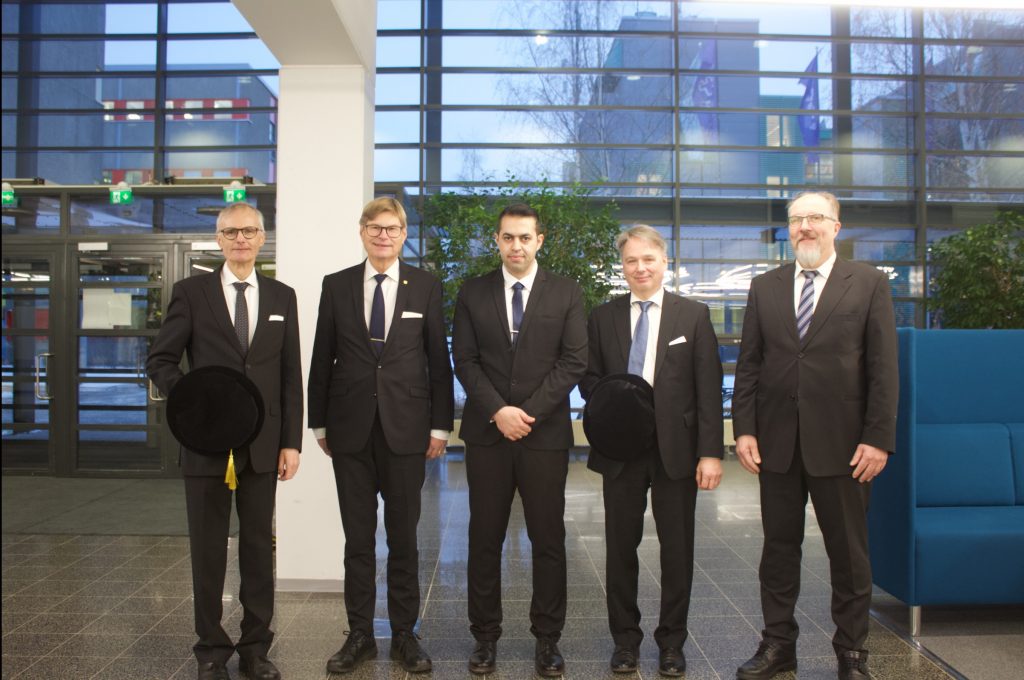The academic doctoral dissertation of Vahid Javaheri was presented for the public defence at the University of Oulu, Faculty of Technology, Center of advanced steel research on Friday, November first 2019. The dissertation with the title of ”Design, thermomechanical processing and induction hardening of a new medium-carbon steel microalloyed with niobium” can be found through the following link:http://jultika.oulu.fi/Record/isbn978-952-62-2358-2
The official opponents for his public defence were Professor Hans-Olof Andren, Chalmers University of Technology and Professor Pasi Peura, University of Tampere. The Custos named by the University of Oulu Graduate School was Professor David Porter.

The thesis has been made within the European Industrial Doctorate (EID) project called Mathematics and Materials Science for Steel Production and Manufacturing, abbreviated as MIMESIS, which has five partners: EFD Induction in Norway; SSAB, Outokumpu, and the University of Oulu in Finland; and Weierstrass Institute for Applied Analysis and Stochastics (WIAS) in Germany.
Following is a brief description of the dissertation: The main aim of the thesis was to develop a steel composition and processing route suitable for making a slurry transportation pipeline with the aid of induction hardening, and to characterize the phase transformations and microstructures involved in the various stages of the processing route. Novel steel chemistry was designed based on metallurgical principles assisted by computational thermodynamics and kinetics. The designed composition is a medium-carbon, low-alloy steel microalloyed with niobium, in wt.% 0.40 C, 0.20 Si, 0.25 Mn, 0.50 Mo, 0.90 Cr, and 0.012 Nb.
This was subsequently cast, thermomechanically rolled on a laboratory rolling mill to two bainitic microstructures, and finally subjected to the thermal cycles predicted to be encountered with the internal induction hardening of a typical pipe geometry.
The phase transformations and microstructures found at various stages of the simulated production process have been characterized and algorithms developed to enable the optimization of microstructure and hardness through the pipe wall thickness.


